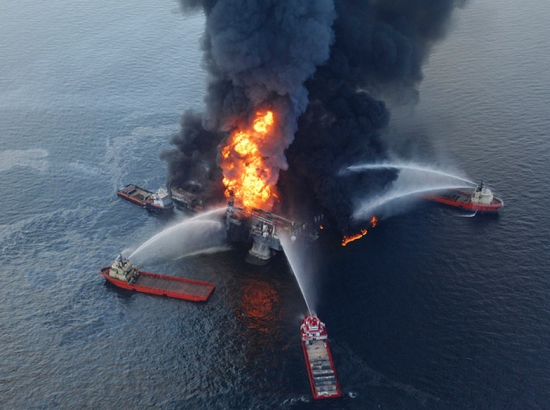SMART-LAB
Новый дизайн
Мы делаем деньги на бирже
Мексиканский залив
Над ВР нависает штраф. НАКАЗАНИЕ ОДНИМ, НАЗИДАНИЕ ДРУГИМ
- 06 сентября 2014, 10:04
- |
Авария в Мексиканском заливе стала катастрофой для компании ВР. Компания уже затратила десятки миллиардов долларов для ликвидации последствий аварии. И вот теперь над ней нависают угрозы новых выплат в сумме 18 млрд долларов. Шансы оспорить такой штраф или существенно его уменьшить у компании еще есть, но в любом случае общие затраты на ликвидацию последствий и штрафы для компенсации ущерба уже стали рекордными для сектора. Хотя реальный экологический ущерб от аварии для планеты был еще во много раз большим.

Произошедшая трагедия станет уроком для человечества и заставит ужесточать нормы безопасности, а назначенные штрафы и понесенные компанией ВР убытки будут напоминанием для нефтегазовых компаний. Угрозы подобных штрафов заставят их увеличивать затраты для снижения рисков масштабных катастроф. Это будет существенно увеличивать капитальные затраты для разработки месторождений, что в конечном итоге будет приводить к увеличению себестоимости добычи нефти. Правда, экологические надбавки к себестоимости, конечно, не могут приводить к кратному увеличению конечной цены нефти.
( Читать дальше )

Произошедшая трагедия станет уроком для человечества и заставит ужесточать нормы безопасности, а назначенные штрафы и понесенные компанией ВР убытки будут напоминанием для нефтегазовых компаний. Угрозы подобных штрафов заставят их увеличивать затраты для снижения рисков масштабных катастроф. Это будет существенно увеличивать капитальные затраты для разработки месторождений, что в конечном итоге будет приводить к увеличению себестоимости добычи нефти. Правда, экологические надбавки к себестоимости, конечно, не могут приводить к кратному увеличению конечной цены нефти.
( Читать дальше )
- комментировать
- Комментарии ( 2 )
- bitcoin
- brent
- eurusd
- forex
- gbpusd
- gold
- imoex
- ipo
- nasdaq
- nyse
- rts
- s&p500
- si
- usdrub
- wti
- акции
- алготрейдинг
- алроса
- аналитика
- аэрофлот
- банки
- биржа
- биткоин
- брокеры
- валюта
- вдо
- волновой анализ
- волны эллиотта
- вопрос
- втб
- газ
- газпром
- гмк норникель
- дивиденды
- доллар
- доллар рубль
- евро
- золото
- инвестиции
- индекс мб
- инфляция
- китай
- кризис
- криптовалюта
- лидеры роста и падения ммвб
- лукойл
- магнит
- ммвб
- мобильный пост
- мосбиржа
- московская биржа
- мтс
- нефть
- новатэк
- новости
- обзор рынка
- облигации
- опрос
- опционы
- отчеты мсфо
- офз
- оффтоп
- прогноз
- прогноз по акциям
- раскрытие информации
- ри
- роснефть
- россия
- ртс
- рубль
- рынки
- рынок
- санкции
- сбер
- сбербанк
- северсталь
- си
- сигналы
- смартлаб
- сущфакты
- сша
- технический анализ
- торговля
- торговые роботы
- торговые сигналы
- трейдер
- трейдинг
- украина
- фондовый рынок
- форекс
- фрс
- фьючерс
- фьючерс mix
- фьючерс ртс
- фьючерсы
- цб
- цб рф
- экономика
- юмор
- яндекс


















 Новости тг-канал
Новости тг-канал